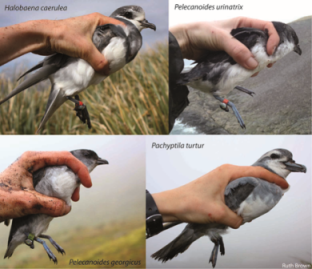
Bienvenidos
Bienvenidos al sitio web de la Estación Biológica de Doñana., Instituto perteneciente al Consejo Superior de Investigaciones Científicas....

La Estación Biológica de Doñana: EBD-CSIC
La Estación Biológica de Doñana es un Instituto Público de Investigación perteneciente al Consejo Superior de Investigaciones Científicas, CSIC, dentro del área de Recursos Naturales...

Misión
Nuestra misión es llevar a cabo una investigación multidisciplinar al más alto nivel y dirigida a la comprensión desde el punto de vista evolutivo de cómo se genera la biodiversidad...

Cómo lo hacemos
Aplicamos múltiples técnicas dentro de un contexto multidisciplinar, desde la genética molecular al seguimiento remoto, la creación de modelos y el análisis isotópico...

Seguimiento de procesos naturales y biodiversidad
Los seguimientos de fauna en el Espacio Natural Doñana abarcan un amplio abanico de comunidades y especies, tanto en lo referente a grupos de organismos acuáticos como terrestres...

Objetivos
Entre nuestros objetivos se incluyen el estudio de los procesos ecológicos y evolutivos mediante la combinación de trabajo de campo, modelos matemáticos, análisis genéticos y estadísticos...
 Destacados
Destacados
-
 La Fundación Jaime González-Gordon ofrece cuatro becas para el desarrollo de Trabajos de Fin de Máster sobre Doñana
La Fundación Jaime González-Gordon ofrece cuatro becas para el desarrollo de Trabajos de Fin de Máster sobre Doñana -
 Cinco contratos para desarrollar la tesis doctoral en la Estación Biológica de Doñana - CSIC
Cinco contratos para desarrollar la tesis doctoral en la Estación Biológica de Doñana - CSIC -
 Actividades de la Estación Biológica de Doñana en la Noche Europea de los Investigadores
Actividades de la Estación Biológica de Doñana en la Noche Europea de los Investigadores -
 La ICTS-RBD se prepara para la 30ª Campaña de Anillamiento de Paseriformes Migratorios en Doñana
La ICTS-RBD se prepara para la 30ª Campaña de Anillamiento de Paseriformes Migratorios en Doñana -
 Inicio procedimiento nueva dirección EBD-CSIC
Inicio procedimiento nueva dirección EBD-CSIC
 Noticias
Noticias
Spatial segregation important mechanism for reducing competition in petrels
According to niche theory, mechanisms exist that allow co-existence of organisms that would otherwise compete for the same prey and other resources. How seabirds cope with potential competition during the non-breeding period is poorly documented, particularly for small species. For the first time the potential role of spatial, environmental (habitat) and trophic (isotopic) segregation was investigated as niche-partitioning mechanisms during the non-breeding season for four species of highly abundant, zooplanktivorous seabird that breed sympatrically in the Southern Ocean. Spatial segregation was found to be the main partitioning mechanism; even for the two sibling species of diving petrel, which spent the non-breeding period in overlapping areas, there was evidence from distribution and stable isotope ratios for differences in habitat use and diving depth. informacion[at]ebd.csic.es: Navarro et al (2015) Spatial distribution and spatial niche of non-breeding planktivorous petrels. Scientific Reports 5: 12164. Doi doi:10.1038/srep12164
http://www.nature.com/srep/2015/150713/srep12164/full/srep12164.html- Laboratorio de Ecología Molecular
- Laboratorio SIG y Teledetección (LAST)
- Laboratorio de Ecología Química
- Laboratorio de Ecología Acuática
- Laboratorio de Ecofisiología
- Laboratorio de Isótopos Estables
- Unidad de Experimentación Animal
- Visita virtual
- Unidad de Seguimiento
- Laboratorio de Camaras climaticas

